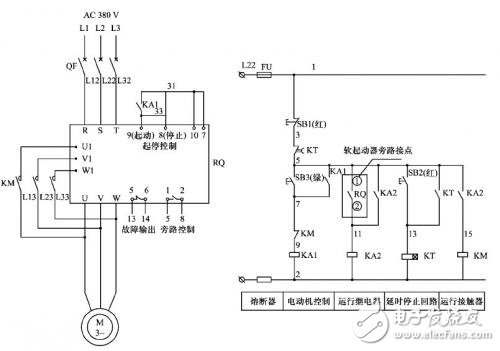Through the analysis of a case involving competition and risk issues in an electrical control loop, the hidden dangers and potential consequences of such problems are revealed. This serves as a reminder to electrical engineers and practitioners to pay close attention to these issues, learn from past experiences, and continuously improve design principles to enhance the reliability, efficiency, and quality of electrical control systems.
In the context of electrical control loops, the presence of competition and risk can directly threaten the safety of both personnel and equipment, potentially leading to serious accidents with severe consequences. Therefore, it is crucial to give these issues due consideration during the design and application phases. In circuit design, addressing competition and risk is of critical importance, as it directly affects the system's ability to operate reliably. Additionally, because strong electricity systems are often visually intuitive and easy to interpret, issues like competition and risk may be overlooked. These problems can arise due to poor design or incorrect wiring during production or maintenance.
The control principle diagram for motor free stop and delayed stop after the soft starter bypasses the motor is shown in Figure 1. The motor starts through the energization of intermediate relay KA1. Once the motor reaches the desired speed, intermediate relay KA2 closes, which then energizes the bypass contactor KM, allowing the motor to bypass. When SB1 is pressed, the coils of KA2 and KM are de-energized, resulting in a free stop. However, when SB2 is pressed, the time relay KT is energized, its normally open contact closes instantly and remains closed, until the time-delayed normally closed contact opens, at which point KA2 and KM lose power, and the motor stops. While the control logic appears sound, a closer inspection reveals potential issues in the delay stop circuit.
If KA2 and KT use different types of relays—such as one being electromagnetic and the other electronic—the timing differences between their coil operations can lead to a "race condition." For instance, when SB2 is pressed, KT energizes and latches, but when its time-delayed normally closed contact opens, KT loses power, and the self-locking contact breaks. During the brief moment between the opening of the time-delayed contact and its re-closure, if KA2 has already disconnected, the motor will stop. However, if KA2 hasn't fully released yet, the motor may not delay properly, as the KT’s contact re-closes before KA2 has completely de-energized, causing KA2 to remain powered. This inconsistency results in unreliable operation, making it a classic example of a competition and risk issue.
For example, if KT is an electronic time relay (like ST3PC-D) and KA2 is an electromagnetic intermediate relay (like JZC3-22d), the electronic relay may act faster, while the electromagnetic relay takes longer to release due to residual magnetism. This can result in KA2 failing to turn off properly, causing the motor to not delay as intended. To resolve this, both components should ideally be of the same type. For instance, replacing KT with a mechanical time relay (like JSK4-224d) can eliminate the timing discrepancy and ensure reliable operation.

Figure 1 shows the principle of motor free stop and delayed stop control.
LED or Metal Halide Lamp Lighting Tower Feature:
The SWT lighting tower is an economical lighting device which easy operate, compact, high performance, and affordable. This series of light tower use a number of advanced and innovative technologies:
1. The control panel is simple with the common configuration: timer, emergency stop button, general alarm light, start switch, light pole control switch and lighting control switch. The power output adopts standard quick insertion output mode, and operation is simple and convenient;
2. Four large-capacity batteries, the lighting system can be powered without the generator set if power sufficiently.
3. The Diesel Generator set is equipped with Kubota or Perkisn Series engine with high quality control system.
4. More humanized maintenance design, all maintenance points are unimpeded ;
5. LED or Metal Halide Lamp lighting system, energy conservation, environmental protection;
6. High-standard mold forming process for all tanks;
7. Internal wiring harness adopts fast plug-in connection mode;
8. Light tower adopts mobile trailer design. Short distance transportation can be directly operated by using tractor-assisted, convenient, fast and efficient;
9. Using anti-rust material, and with high-temperature baking paint process surface, effectively reduce noise up to 15db or more;
10. Using hydraulic power to drive lamp post , and making the unit easy to operate.
11. Four supporting legs install light tower, which can make the installation and dismantling process easily.
Light Tower Genset,Light Tower Genset,Light Power Generator,Lighting Tower Generator
Guangdong Superwatt Power Equipment Co., Ltd , https://www.swtgenset.com